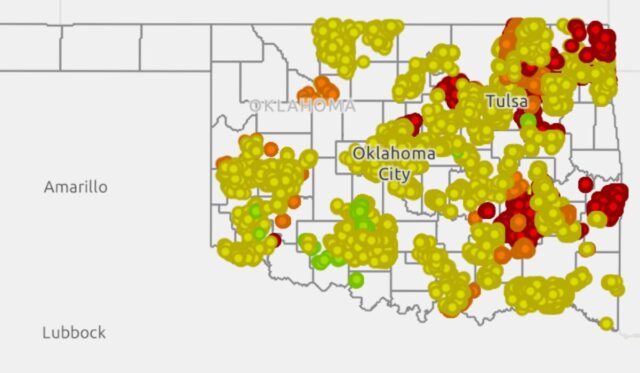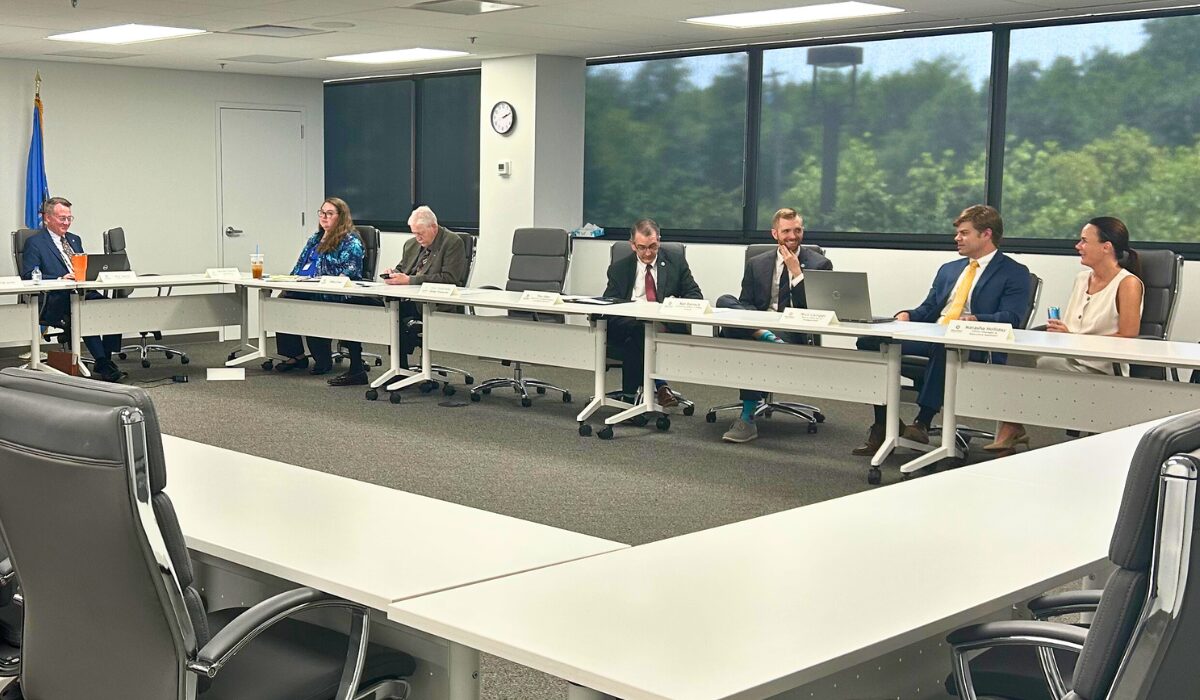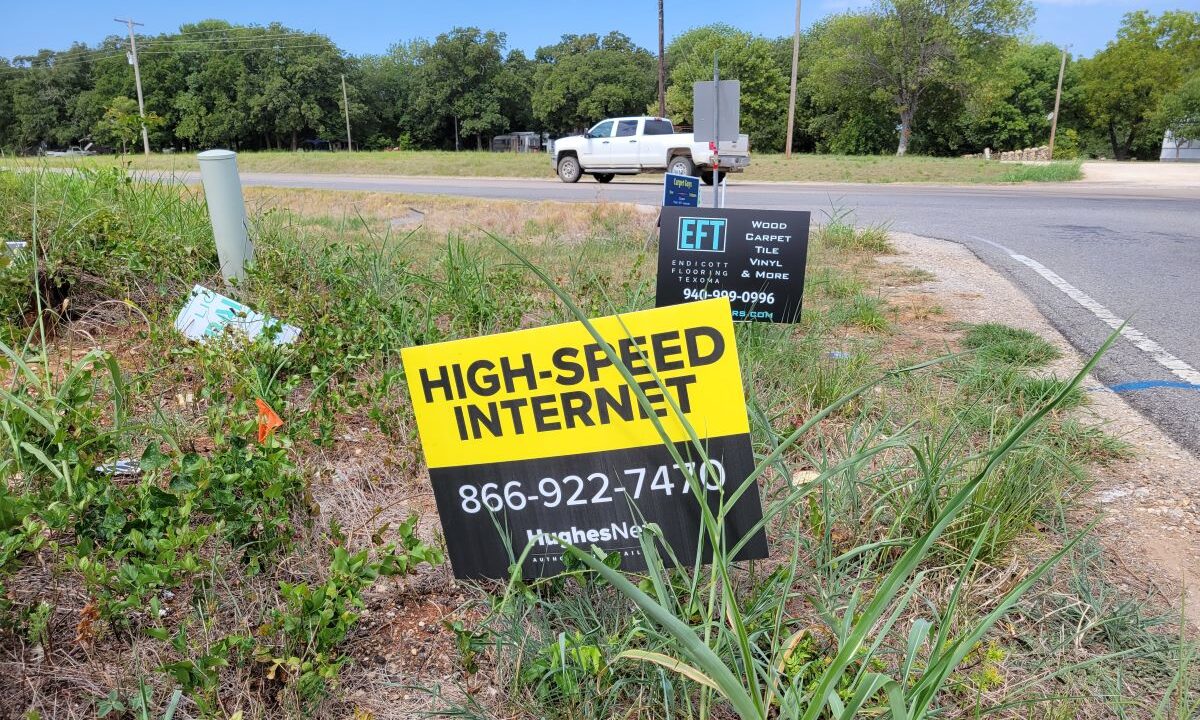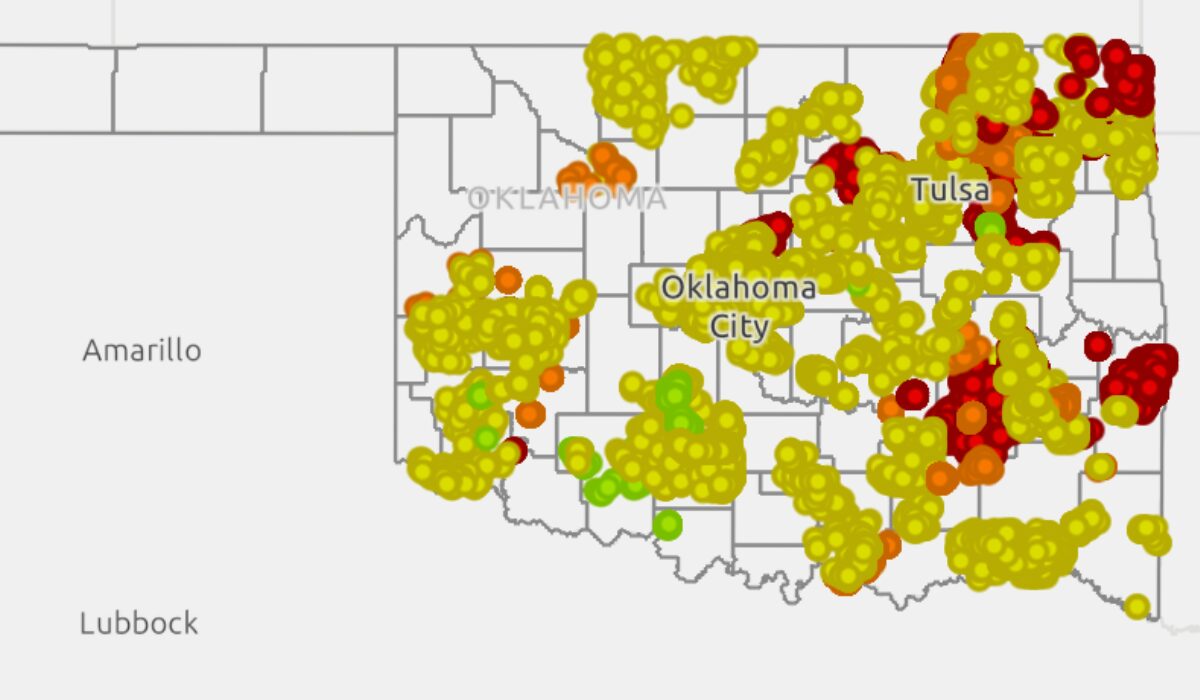 The Oklahoma Broadband Office’s online dashboard displays a map of ongoing ARPA-funded broadband development projects, seen here as of Tuesday, July 22, 2025. (Oklahoma Broadband Office)
The Oklahoma Broadband Office’s online dashboard displays a map of ongoing ARPA-funded broadband development projects, seen here as of Tuesday, July 22, 2025. (Oklahoma Broadband Office)
Support Journalism
After years of planning and delay, Oklahoma is entering a new stage of broadband development.
As a result of the Broadband Equity, Access and Deployment Program — as well as earlier American Rescue Plan Act investments — Oklahomans living in areas that have lacked reliable internet access could soon gain high-speed broadband services. However, evolving federal guidance and political shifts have complicated the rollout, delaying construction and reshaping which technologies and providers will qualify for funding.
The BEAD Program represents a $42.5 billion federal initiative established when President Joe Biden signed the 2021 Infrastructure Investment and Jobs Act, which allocated $1.2 trillion for infrastructure projects across the country. BEAD’s mission is to bridge the “digital divide” by funding high-speed internet access in unserved areas, which have no access to broadband, and underserved areas, where internet speeds fail to meet federal standards.
In August 2024, Oklahoma received preliminary approval for more than $797 million in BEAD funding. The Oklahoma Broadband Office set a May 26 application deadline for internet service providers seeking to deploy the funds. But in June, the federal agency overseeing BEAD released a 23-page policy update rescinding Biden-era project approvals and repealing several program requirements, including those related to climate resiliency, workforce development, net neutrality and community engagement.
States were instructed to conduct an additional “Benefit of the Bargain” application round under the revised rules, which Oklahoma completed July 23. The state now faces a September deadline to submit its proposed contract awards for federal approval.
BEAD update enables greater competition
 Members of the Oklahoma Broadband Governing Board prepare for a meeting Tuesday, June 17, 2025. Although discussions were had about pending policy updates, the board ultimately did not achieve a quorum and could not formally meet. (Jessica Pearce)
Members of the Oklahoma Broadband Governing Board prepare for a meeting Tuesday, June 17, 2025. Although discussions were had about pending policy updates, the board ultimately did not achieve a quorum and could not formally meet. (Jessica Pearce)
Under President Donald Trump, the updated guidance emphasizes technology neutrality, requiring states to select broadband projects based on cost efficiency and deployment speed rather than specific infrastructure types. While the Biden administration prioritized fiber-optic networks, the National Telecommunications and Information Administration’s revised policy under the Trump administration elevates alternatives like fixed wireless and low-Earth-orbit satellites, such as Elon Musk’s Starlink satellites. The June notice said alternatives previously had been relegated to “third-tier status” below fiber-optic networks, which are lauded for superior speed and reliability.
Mike Sanders, executive director of the Oklahoma Broadband Office, said the state remains committed to finding the best technology for the best price.
“We want to use these tax dollars as efficiently as possible,” Sanders said. “But we also want to make sure that unserved and underserved Oklahomans get the service they’ve been asking for for decades.”
Although the Oklahoma Broadband Governing Board will consider all technologies in its review of resubmitted BEAD applications, Sanders said he still considers fiber, the favored technology of the previous administration, the broadband “gold standard,” especially in a state vulnerable to wildfires and extreme weather.
“It’s a little more costly up front, but it lasts longer,” Sanders said. “There’s really no expiration date on fiber, where the other technologies seem to have an expiration date.”
Despite fiber’s technical advantages, there can be instances where other technologies are more favorable. Misti Willock, the vice president of strategic partnerships at Resound Networks, said cost and geography often make fixed wireless or low-Earth-orbit satellites more practical in rural areas.
“For fiber to be financially viable, you need to have a lot of density, meaning a lot of homes and a very small area,” Willock said. “That’s where fiber fits best. When you don’t have that population density, you look at fixed wireless or LEO satellites.”
Sanders emphasized that competition between providers and technologies will benefit consumers.
“Oklahomans deserve competition,” Sanders said. “Competition makes everybody better. Fixed wireless has improved over the last decade. Satellite has improved. They deserve a fair shake.”
BEAD expected to bring rural internet ‘to a whole new level’
 A sign advertises internet service off U.S. 377 west of Kingston, Oklahoma, on Saturday, Aug. 5, 2023. (Michael McNutt)
A sign advertises internet service off U.S. 377 west of Kingston, Oklahoma, on Saturday, Aug. 5, 2023. (Michael McNutt)
Although the BEAD Program was enacted in 2021, construction has yet to begin on any BEAD projects in Oklahoma. Sanders attributed the delay to bureaucratic challenges and the shifting federal requirements.
“Quite frankly, the reason for the slowdown was all the added layers of bureaucracy,” he said. “Every time we got close, there was a new add-on that didn’t have anything to do with internet buildout. It took them three-plus years to give guidance and give straight answers.”
While Sanders said the most recent policy changes under the Trump administration have not caused a significant delay in the state’s rollout — although they did require ISPs to endure a second application process — his office now has until Sept. 4 to submit its revised list of BEAD contract awards for final approval. Once submitted, the NTIA has 90 days to approve or deny the proposal. If approved, Sanders said he is “cautiously optimistic” that construction on BEAD-funded projects in Oklahoma will begin by early 2026, with services operational by the end of 2028.
Sanders noted that while BEAD has experienced delays, Oklahoma has made significant broadband investments through the American Rescue Plan Act. The Oklahoma Legislature allocated more than $385 million in ARPA funds for broadband expansion, leading to 164 active projects across the state.
Where’s the money going?
Review the Oklahoma Broadband Office’s dashboard of current projects.
“2024 was the most historic year in broadband investment Oklahoma has ever seen,” Sanders said. “We’ve broken ground on nearly 20 projects. Most states haven’t done anything because they’re waiting on BEAD, but we’ve already removed 70,000 unserved and underserved Oklahomans from the list.”
One of the companies involved in those efforts is Resound Networks, a Texas-based ISP that received $21.1 million in ARPA funding to deliver a mix of fiber and fixed wireless services across 14 Oklahoma counties. Willock said these funds were critical in making rural broadband expansion feasible.
“When you look at some of these more rural communities, you’re not just dealing with population density, but you’re also dealing with poverty,” Willock said. “A lot of people can’t afford to pay for internet, so you have lower take rates than you would in a metropolitan area like Oklahoma City. These programs, while they do not help with the cost of operations, do help with the upfront capital costs, which helps us in the long run, because you’re not having to build 100 percent of a network with your own capital.”
Among Oklahoma companies laying fiber in rural communities, Hilliary Communications received $43.2 million of ARPA funds in December for projects across 11 counties: Atoka, Comanche, Cotton, Grady, Jackson, Kiowa, Latimer, Le Flore, Pittsburg, Stephens and Washita. According to an OBO press release, those funds will add high-speed internet service for 2,007 homes and businesses, including access for the entirety of Bray, a 950-person community northeast of Duncan.
“Hilliary Communications is proud to be at the forefront of delivering fiber broadband to rural communities across the country, including this latest expansion project that expands fiber connections to the entire community of Bray,” Dustin Hilliary, co-CEO of Hilliary Communications, said in the release. “This project exemplifies our long-standing commitment to connecting rural America from the heart of Oklahoma. It puts us one step closer to ensuring every rural community has access to the latest high-speed internet needed to thrive in tomorrow’s economy.”
‘Modern connectivity is vital in keeping our rural communities intact’
A study from the Center on Rural Innovation found that communities with high rates of broadband use tend to see 213 percent more business growth, 44 percent higher GDP growth and 18 percent higher per-capita income growth.
For sovereign tribal nations, broadband expansion also supports cultural preservation and community cohesion. Julie Hubbard, communications director for the Cherokee Nation, said improved internet access helps citizens remain connected to their heritage and communities.
“The ability for our citizens to have modern connectivity is vital in keeping our rural communities intact,” Hubbard said. “Access to telehealth, online education and remote working opportunities give our citizens the option to stay in the communities their families may have lived in for generations and continue to build them up. The Cherokee Nation has an extremely extensive language program, and many parts of the language program rely heavily on connectivity.”
However, Hubbard emphasized that coverage alone is not enough to close the digital divide. Affordability remains a major barrier.
“A large issue we have today in the covered areas is that while the access exists, it may still be cost-prohibitive for some to take part,” Hubbard said. “Programs like Lifeline are extremely beneficial to those who qualify, but the process is not simple, especially for an individual lacking tech skills.”
Willock said that although ARPA-funded projects have already been impactful, “BEAD takes it to a whole new level” and will enable greater economic development in low-income and rural communities.
“When we’re talking about internet access, we’re talking about access to information and opportunity,” Willock said. “Everyone deserves that level playing field. The biggest benefit to that is this gives people a way to try to better themselves, so that they can get a promotion at work, or they’re able to find even a remote position where they’re paid better, and smaller communities can draw in more industry.”
Sanders said that the benefits go beyond economic opportunities.
“This is going to change lives,” he said. “Those folks know that their lives are going to change for the better, whether it’s in education, health care, tourism or marketing. This is about improving the quality of life for Oklahomans.”
![]()
Support Journalism

